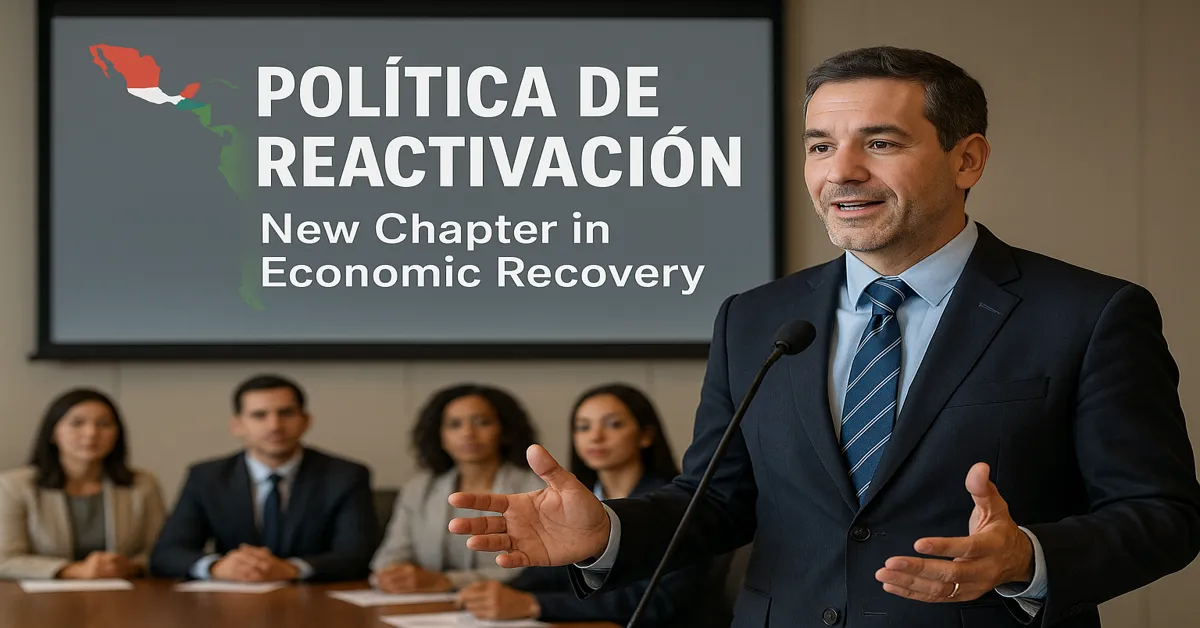As Latin America faces the post-pandemic era with heightened economic volatility, shifting geopolitical alliances, and the pressing urgency of climate adaptation, governments across the region are ushering in a new phase of economic policymaking. At the center of this transformation is the evolving concept of política de reactivación — economic reactivation policy — a strategy increasingly viewed not merely as a return to growth, but as a reinvention of how growth is conceived, distributed, and sustained.
A Changing Economic Landscape
The COVID-19 pandemic left in its wake one of the deepest recessions in Latin American history. For many nations, GDP contractions ranged between 7% and 11% in 2020, with employment, public finances, and health systems strained to their limits. Though recovery began in 2021, it was uneven and incomplete.
By 2025, política de reactivación has moved beyond emergency stimulus packages and toward a more strategic recalibration. Rather than reverting to pre-pandemic models focused on resource extraction and low-value manufacturing, countries like Chile, Colombia, Brazil, and Mexico are experimenting with multifaceted policy mixes aimed at building resilient, inclusive, and green economies.
Diversification as a Core Principle
A central feature of modern reactivation strategies is economic diversification. In Brazil, the Ministry of Economy has partnered with tech incubators and agritech firms to invest in digital infrastructure and sustainable agriculture, targeting both job creation and food security. Meanwhile, Colombia is pivoting toward tourism and creative industries, with Medellín emerging as a hub for design and digital services.
This approach stems from hard-learned lessons. Heavy reliance on commodities exposed many countries to the volatility of global markets. With the energy transition underway globally, demand for oil and gas faces structural decline, pushing policymakers to future-proof their economies.
Infrastructure and Green Investment
In Argentina and Peru, reactivation policy now prominently features green infrastructure. From solar megaprojects in the Atacama Desert to wind farms across Patagonia, the region is seeing a surge in climate-aligned investments. National development banks, retooled post-2021, are playing a pivotal role, issuing green bonds and co-financing clean energy transitions.
The focus isn’t only on large-scale projects. In Guatemala, local governments are initiating urban renewal programs that combine climate resilience with job creation. These include green public transport systems and community-led waste management cooperatives.
Labor and Social Inclusion
A modern política de reactivación cannot ignore the social scars deepened by the pandemic. In response, many governments are embedding inclusion into the fabric of economic recovery. Mexico’s latest policy package mandates gender quotas in state-supported employment programs and prioritizes investment in indigenous and rural communities.
Similarly, Uruguay is piloting a universal basic income program, funded in part by a new tax on digital services. This initiative aims to stabilize consumption among the most vulnerable while fostering human capital development.
Innovation and Technological Sovereignty
In a world increasingly shaped by digital transformation, Latin American countries are also striving for technological sovereignty. This element of política de reactivación aims to reduce dependence on foreign technologies and supply chains.
Chile has launched a national semiconductor initiative, with universities and private sector actors collaborating to build local capacity in chip design and production. In parallel, Ecuador is expanding its open-source software ecosystem for public services, reducing reliance on foreign vendors and increasing data sovereignty.
Fiscal Prudence Meets Ambition
Balancing ambition with fiscal realism remains a challenge. Public debt ratios soared post-2020, forcing finance ministries to find innovative funding mechanisms. Across the region, sovereign wealth funds are being restructured, and novel tools like social impact bonds and development impact investing are gaining ground.
The Inter-American Development Bank (IDB) has also begun offering outcome-based lending models, linking disbursements to the achievement of specific social and environmental benchmarks rather than traditional project timelines.
Regional Cooperation and Global Positioning
Another evolution in the política de reactivación narrative is the emphasis on regional cooperation. The formation of the Latin American Green Recovery Alliance in 2023 marked a significant step toward collective action. The alliance focuses on climate finance, renewable energy integration, and shared research infrastructure.
This collaborative approach enhances bargaining power in global negotiations, especially on climate aid and trade rules. It also facilitates standardization, allowing for cross-border energy grids and harmonized labor mobility agreements.
Challenges and Criticisms
Despite these advances, challenges persist. Critics argue that some reactivation policies are overly technocratic, lacking democratic accountability. There are also concerns about policy continuity, given the frequent electoral changes across the region.
Moreover, climate vulnerability remains acute. Countries like Honduras and El Salvador continue to grapple with the dual threats of hurricanes and droughts, testing the limits of even the most forward-thinking policies.
Corruption and bureaucratic inefficiencies also risk undermining implementation. While transparency mechanisms have improved, civil society groups remain watchful.
A Redefinition of Growth
At its core, política de reactivación in 2025 is not just about GDP expansion. It reflects a broader redefinition of what growth means in the 21st century. Inclusive governance, ecological balance, and technological empowerment are no longer add-ons — they are prerequisites.
The policy experiments underway in Latin America may yet serve as a blueprint for other regions facing similar crossroads. As the world watches, Latin America is writing a new playbook for economic resilience: one that is bold, adaptive, and fundamentally people-centered.
The Road Ahead
Whether this reactivation is ultimately transformative depends on execution, sustained political will, and citizen engagement. For now, the region is signaling a clear intent: not just to recover, but to rise differently. In doing so, Latin America’s política de reactivación is becoming more than a regional agenda — it’s a global lesson in economic reinvention.











